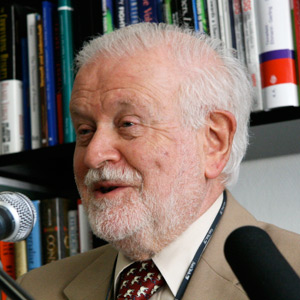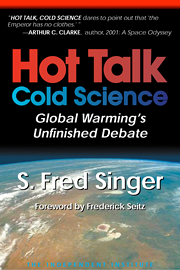European Union climate policy seems to be driven by the usual bureaucratic twins: more control and more tax revenues. Added to these, there is the almost pathological fear of global warming and the unreasonable compulsion to reduce emissions of carbon dioxide, a non-toxic, natural constituent of the atmosphere—and an absolute necessity for plant growth—hence, for global agriculture.
One sees this compulsion in the proposed EU “Fuel Quality Directive,” designed to exclude the import of fuel extracted from Canada’s oil sands. One sees this in the CO2 “cap & trade” emission trading scheme (ETS) on airlines landing or taking off from the European continent—even though all of global air traffic contributes only 2-3% of the greenhouse (GH) gas CO2. Airlines would have to buy emission permits, calculated on CO2 emitted over the entire length of the flight.
ETS for airlines went into effect on January 1, 2012, over strong objections from major non-European nations. An earlier lawsuit from several US airlines was dismissed by the EU Court of Justice, calling forth a rather mild State Department letter (Dec 16, 2011), threatening unspecified retaliation. Many nations now refuse to abide by the EU directive. Twenty six of them, including US, China, India, and Russia, met in Moscow recently to discuss what actions they might take, ranging from ignoring the Directive to legal and economic countermeasures. Proposals under discussion include cancellation of Airbus purchases, a stiff tax on overflights of Siberia, and even threats of a trade war.
It seems, however, that the EU is not going to budge—although they might try to bribe other nations by sharing the tax revenues. Or—might Zurich or Belgrade be exempt from EU restrictions and emerge as lower cost European hubs for intercontinental flights? With economic and legal actions still undefined, it may be time to turn to the inadequate scientific underpinnings of the EU directive. Two separate questions arise:
- Does the increase in global CO2 levels have any measurable influence on global climate? Scientific views are divided on this basic issue. The UN-IPCC (Intergovernmental Panel on Climate Change) concludes that the reported increase in global surface temperatures of the last decades of the 20th century is anthropogenic, caused by the rise in CO2 levels. Their conclusion is disputed by climate skeptics, who argue that the temperature increase is much less than what the IPCC imagines.
An influential group of skeptics, the NIPCC (Nongovernmental International Panel on Climate Change), questions the existence altogether of any appreciable increase in temperature during 1978 to 2000. They regard the reported increase in and-surface temperatures as problematic and point to the absence of warming in the atmosphere, as seen by both satellites and radiosondes in weather balloons—even though atmospheric theories as well as climate models call for the atmospheric trend to be about double that of the surface. NIPCC also points to the absence of ocean warming and to the absence of warming as seen by most non-thermometer (“proxy”) data—from tree rings, ice cores, ocean sediments, stalagmites, etc.
This major issue needs to be resolved, and hopefully will be resolved soon, before drastic steps are taken to impose restrictions on the use of fossil fuels for energy generation and transportation.
- But there is also a second issue that needs to be examined. The conventional assumption incorporated into all climate models is that anthropogenic CO2 is a well-mixed addition to the atmosphere because of its centuries-long lifetime. But most air traffic is now at an altitude of 10-12 km, mainly around 30-50 degrees latitude in the northern hemisphere. Since mixing is not instantaneous but takes time, these continued emissions into a narrow latitude band must create a concentration “bulge” in the distribution of CO2. Mixing may not keep up with the rate of injection of aircraft CO2.
Such a bulge might have profound consequences for climate—at least according to theory. Therefore, before proceeding with an airline tax, it behooves regulators to be clear about the effects of such a non-uniform distribution of CO2. One needs experimental and modeling studies to clarify this matter. Specifically, one needs to collect atmospheric samples over an altitude range, about 8-15 km, in the northern hemisphere, and compare to corresponding data in the southern hemisphere, where air traffic is considerably less.
It turns out that there is a useful “tracer” that can also be studied. Incoming galactic cosmic rays produce radioactive carbon-14 in nuclear interactions over a range of 8-15 km, at about the level of the tropopause (which is around 10 km, separating the troposphere and the stratosphere). The problem is quite similar in that C-14 will also be mixed within the atmosphere after a period of time. But there should be an observable bulge, an increased concentration of C-14 in both northern and southern tropopause regions.
In addition to emitting CO2, aircraft burning jet fuel also exhaust large quantities of water vapor (WV), which is a major GH gas. The influence of this additional WV in the dry, cold region of the lower stratosphere may not have been fully considered. WV will likely condense and form ice crystals. These are normally seen as condensation trails (“contrails”) from aircraft flying near the tropopause. As the contrails dissipate, they become invisible cirrus clouds, but their radiative properties persist; they could cause appreciable GH warming at the earth surface.
Again, one needs to understand whether and how these complicated processes can influence the climate. I can make some informed guesses, but we really need actual measurements and dedicated model experiments. Note that I do not deny the possible existence of some climate effects; but I also argue that any attempt to regulate aircraft emissions is premature before we understand the underlying science more completely.









